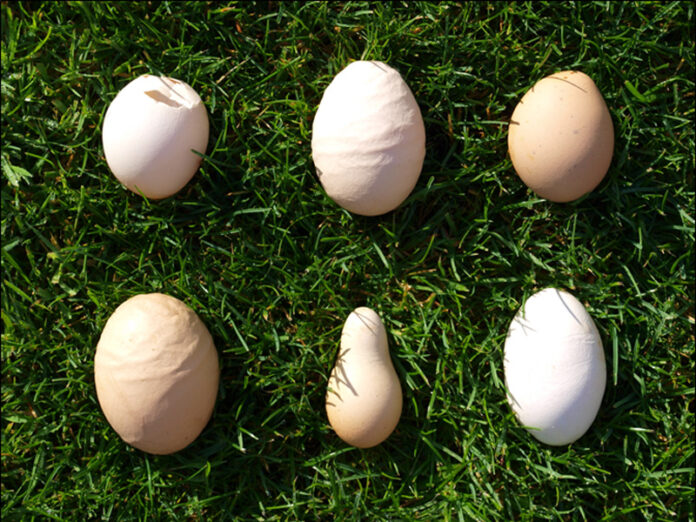BY TONY KIRAGU
It is fundamental to understand the process involved in egg formation which in return would enable us to grasp how some defects occur.
It takes the hen approximately 24 to 26 hours to develop and lay an egg. This process takes place in stages. Production of the yolk is the commencing stage. The ovary produces thousands of ova which become future yolk. The ova begin to develop one at a time when the hen reaches sexual maturity. In hens, only one ovary is active — the left ovary. During ovulation, the yolk is released into a funnel shaped structure known as the infundibulum- a part of the oviduct. Ovulation/release of the yolk normally occurs approximately 15 to 30 minutes after laying of the previous egg. In some cases two yolks are released at the same time – leading to a double yolked egg. This is mostly seen in young birds and those that lay big eggs. Blood spots are occasionally observed in the yolk. These may be due to ruptured blood vessels especially capillaries during ovulation or in the oviduct.
Fertilisation usually occurs in the infundibulum (as long as insemination had occurred). The released yolk travels down to the magnum – 2nd part of the oviduct where the egg white (albumen) is added. This takes up to three hours. Foreign material in the oviduct may end up being incorporated in the egg for instance round worms.
The next process takes place in the isthmus- the 3rd part of the oviduct. Here, the egg membranes that are found around the egg white are formed as well as addition of water to the egg white. The egg at this juncture has all its components and necessary nutrients and is ready for shell formation. The process of shelling takes place in the shell gland (uterus). Salt and water are added to the egg before calcification (shell formation) takes place.
Calcium carbonate is the main composition of the egg shell-constituting approximately 95 per cent of the shell. The egg stays in this gland for 19 to 20 hours and shell colour is also added at this point. After shell formation the egg moves into the cloaca where it is ready for lay- through the vent.
Some of the defects observed in eggs may be caused by diseases, nutritional deficiencies or conditions affecting the reproductive system. Infectious bronchitis (IB) is one of the diseases that leads to production of poor quality eggs. It affects the respiratory, urinary and reproductive systems.
Misshapen eggs, thin/soft shelled eggs and watery albumen are some of the egg qualities observed in IB infections. Egg drop syndrome (EDS) is a disease that is characterised by production of soft shelled and shell-less eggs as well in apparently healthy birds.
Nutritional deficiencies of calcium, phosphorous, selenium, vitamin D, E and B12 may also lead to thin shelled/ shell-less eggs. Excessive consumption of calcium and phosphorous may on the other hand lead to abnormally thick and rough shelled eggs. Pimpled or rough eggs also occur when a shell is retained for too long in the shell gland. The writer is a vet surgeon and runs Nature Kuku, a farm in Naivasha that produces kuku kienyeji breed and trains small holder farmers.
This feature was first published in the Smart Harvest farming magazine.








